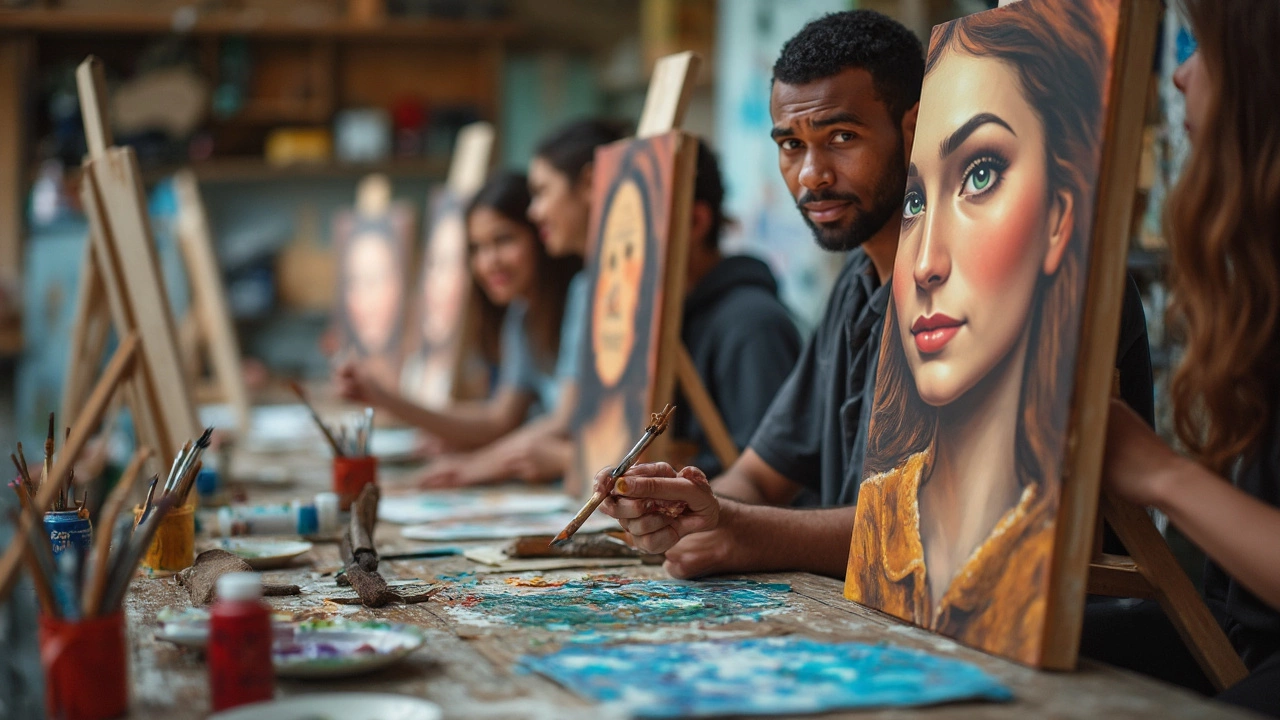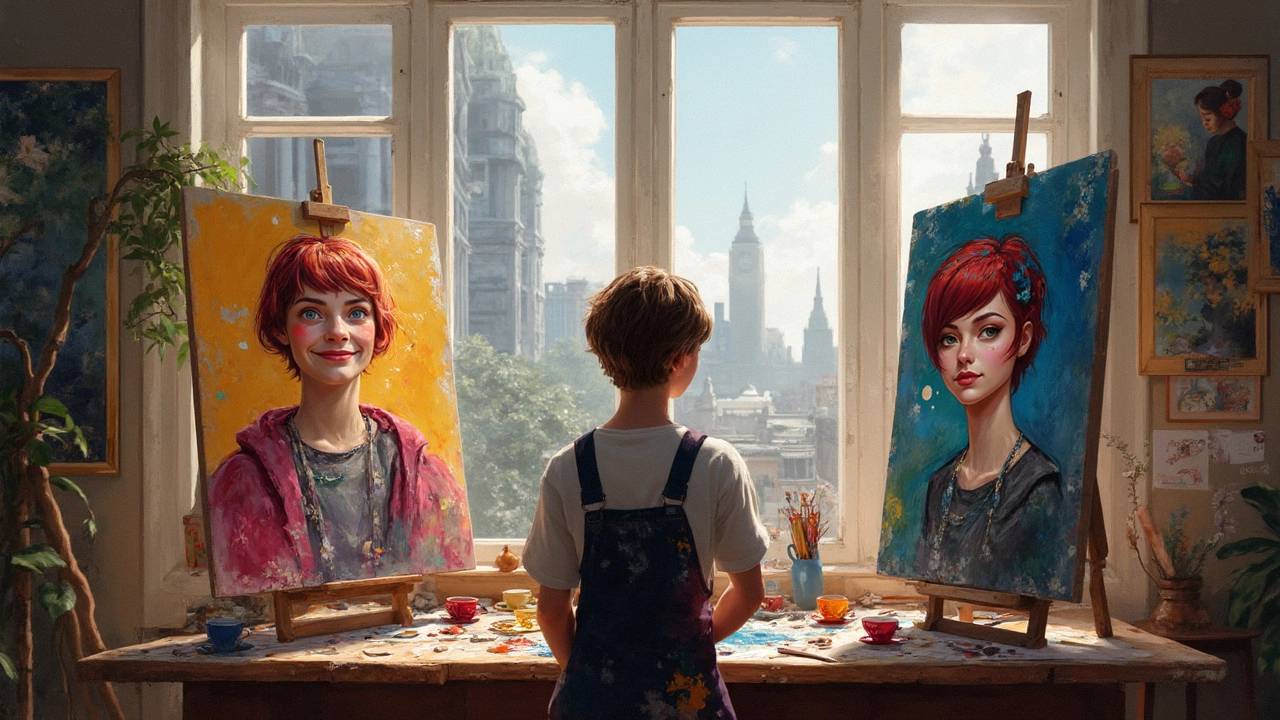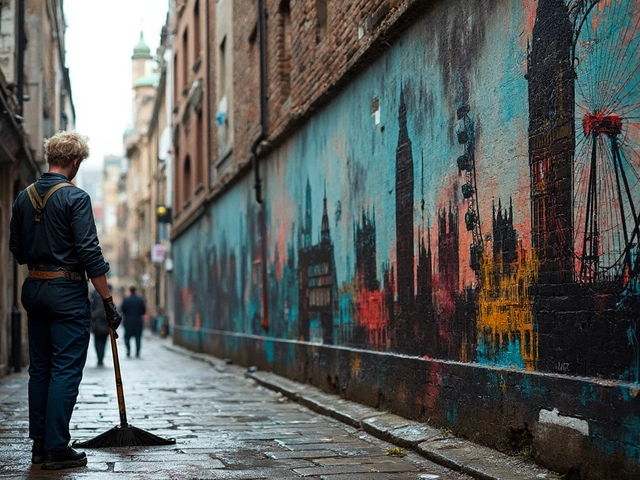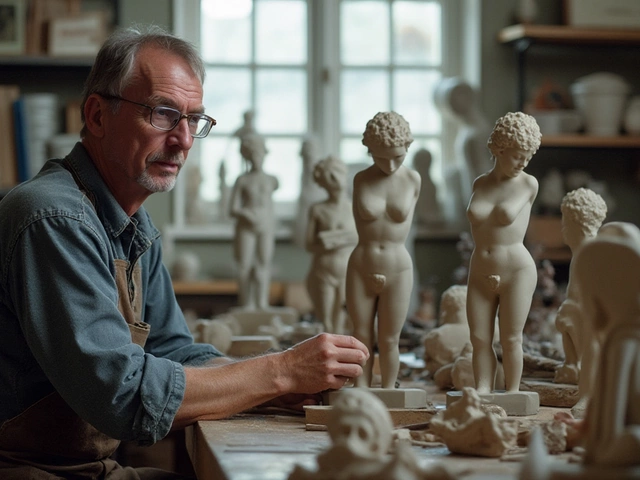Standing in the art aisle, you’ve probably wondered if acrylic or oil paint will make your first portrait less of a pain. Honestly, each one has a personality — and they both love to show it off. Some artists swear by the speed and clean-up of acrylic, while others fall head over heels for those smooth oil blends that you see in museums.
If you want to make fewer mistakes and clean up without wrecking your sink, acrylic might look tempting. Oil, though, is the usual pick for people craving slow drying time so they can blend skin tones for hours or even days. Forget what all the “pros” say — if you know what to expect, either one can work, but they behave very differently at each step of the portrait process.
The trick is matching your painting habits and patience level to the right medium. If you're tired of paint drying before you even finish a brushstroke, or you keep smudging things as you try to add a highlight, knowing these little details up front saves a lot of frustration. No point in fighting your supplies. Stick around for the good, bad, and sometimes weird truth about painting faces with acrylics and oils.
- Acrylic: Fast and Forgiving?
- Oil: The Slow Blend Master
- Common Struggles (And How to Dodge Them)
- Which Should You Choose?
Acrylic: Fast and Forgiving?
If you’ve ever tried painting a portrait painting but hated how long it took for things to dry, acrylic paint feels like a lifesaver. Straight out of the tube, it’s ready to use. You just need a little water to thin it, and you’re good to go. Mistakes can disappear with a quick layer, since acrylic goes on opaque and covers just about anything you put underneath.
The speed of acrylic can be your best friend—or your worst enemy. The paint dries in about 10-30 minutes depending on how thick your layer is and how dry or humid it is in your room. According to Golden Artist Colors, “acrylic paint films dry rapidly: thin films can be touch dry within minutes.” That means you don’t waste much time waiting, but you do have to move fast.
| Feature | Acrylic Paint | Oil Paint |
|---|---|---|
| Average Drying Time | 10-30 min | 12-48 hrs (touch dry) |
| Cleanup | Water | Solvent (like turpentine or OMS) |
| Layering | Easy—layers dry fast | Have to wait between layers |
The quick drying isn’t just about time—it changes how you paint. Blending two colors together on the canvas is possible, but you need to work in small sections and be quick on the draw. If you’re a fan of painting multiple layers, acrylic loves to stack up without smudging your last brushstroke. That’s gold when you want to fix a nose or reshape the jawline without turning everything into a muddy mess.
If you mess up (and, honestly, who doesn’t?), acrylic gives you another shot. Just let the mistake dry, then paint right over it. The other big win: cleaning your brushes is as simple as running them under water, so there’s no need for harsh chemicals or fancy setups. This keeps your space safe if you’re painting around pets—like my nosy cat Whiskers, who loves a stray paintbrush.
One word of warning: since acrylic dries fast, you can lose paint on your palette if you don’t keep it moist. Lots of artists use a spray bottle to mist their palette or buy special acrylic-stay-wet palettes. It’s a small price to pay for all the convenience.
If you’re learning, speed is an advantage, not a problem—mistakes become part of the process, not the end of your painting. — Will Kemp, Will Kemp Art School
- Work in sections so your paint doesn’t dry before you finish blending.
- Clean your brushes often to keep them from gumming up.
- Cover up mistakes with fresh paint after it dries—no one will know.
So, if you’re impatient or want to try out different ideas fast, acrylic paint makes portrait painting a lot less stressful. It’s like hitting undo in real life, if you remember to work quick!
Oil: The Slow Blend Master
If you want to take your time with portrait painting, oil is the classic choice. Oil paint stays wet for hours, sometimes days, so you can tweak skin tones and blend edges at your own pace. This is a big reason old-school portrait artists swear by oils. If you botch a shadow or want to sneak in a highlight, you can easily make changes long after your first try.
Blending is where oil paint really shines. You can create subtle shifts in color, making cheeks and jawlines look soft and real—not flat or cartoon-ish. Oils almost seem made for painting the curves of a nose or the rosy blush on someone’s face. Big names in art—like Rembrandt and John Singer Sargent—used this slow drying time as a superpower to perfect tiny details.
- Oil paint lets you fix mistakes long after you lay down the first brush stroke.
- The buttery texture works well for effortless shading and smoothness—no obvious brush marks if you don’t want them.
- You can even work "wet-on-wet," meaning new paint glides into old layers without breaking a sweat.
- Pigments are usually more vibrant and stay true over the years.
The catch? All this luxury comes at a price—patience, proper ventilation, and more gear. Cleaning up with solvents isn’t anyone’s favorite. Drying can take several days or even weeks, depending on the thickness and weather in your studio (my cat Whiskers once smudged a week-old oil painting—lesson learned!).
| Oil Paint Benefit | Acrylic Paint Comparison |
|---|---|
| Drying Time: 1-7 days | Drying Time: 10-30 minutes |
| Blending: Super smooth | Blending: Can be tricky, dries fast |
| Corrections: Easy while wet | Corrections: Must work quick |
| Cleanup: Needs solvents | Cleanup: Just soap and water |
When you’re ready to experiment, just start small—get a pack of oil paints, some brushes you don’t mind roughing up, and be patient. The learning curve isn’t steep if you take it slow. As long as you don’t mind wait times, oils can make portraits come alive like nothing else.

Common Struggles (And How to Dodge Them)
If you’ve ever cursed at your canvas when making a portrait painting, you’re not alone. Both acrylic and oil have their curveballs, and getting stuck is normal. Good news: most problems have a fix, no matter which paint is on your palette.
Acrylic dries fast—sometimes too fast. You can end up with hard edges before you’re even finished shaping a cheek. If you need more time, use a spray bottle to lightly mist your canvas or mix in a slow-drying medium. Some people keep a damp palette (sometimes literally with a sheet of baking paper over a wet sponge) so their paints don’t turn into useless blobs halfway through the face.
Oil paint has the opposite problem: it stays wet forever, so colors can turn muddy fast, especially if you’re not patient between layers. To avoid this, use the “fat over lean” rule—apply richer, oilier paint over thinner layers. Not only does this prevent cracking later, it makes blending less messy. Give sections a day or two to set up before boldly adding detail.
Chemicals are another headache. Acrylic’s a breeze—soap and water do the trick. With oil, you’ll need solvents, and that means keeping things ventilated and being careful with storage. If you’re sensitive to smell, there are low-odor options, but it’s still one extra step to remember.
Then there’s color matching, the silent killer. Both paints dry to a slightly different color than what you see wet. With acrylic, the shift is sharper—usually a bit darker and duller. Try testing a swatch on scrap paper and letting it dry before committing. Oils shift less, but it still happens.
Here’s a rundown of common stumbling points, plus ways to outsmart them:
- Acrylic dries too fast: Add a retarder or spray water mist. Work in smaller sections.
- Oil paint gets muddy: Clean your brush often, paint in thin layers, and allow drying time between passes.
- Paint cracks (oil): Stick to the fat over lean rule, don’t rush thick layers early on.
- Streaky blending (acrylic): Work on a damp surface, use softer brushes, or blend with glazing medium.
- Clean-up hassle (oil): Try water-mixable oils for less toxic fuss or stay stocked with gloves and rags.
If you like numbers, check this out: the average drying time for a thin layer of acrylic is about 15–20 minutes, while oil can take 1–3 days. Here’s a helpful comparison:
| Problem | Acrylic | Oil |
|---|---|---|
| Drying time | 15–30 mins | 1–7 days |
| Clean-up | Soap & water | Solvents required |
| Color shift when dry | High (darker/duller) | Minimal |
Nobody nails it their first go. If Whiskers knocks your water cup over mid-blend, take a breath—there’s always a workaround. Using a consistent set-up and testing new techniques on scrap before your masterpiece can save a lot of stress later.
Which Should You Choose?
This is where it gets real: the choice between acrylic and oil for portrait painting depends mostly on your personality (and how much mess you’re willing to handle). Let’s break it down with what matters most for new and casual painters.
If you hate waiting for things to dry, acrylics are your friend. You can finish a whole portrait in a day if you’re focused. They also clean up with water, which means you won’t be scrubbing oil out of your cat’s fur like I did once with my Whiskers. Acrylics have less odor, too, and you don’t need fancy ventilation, so they’re better for apartments or small rooms.
But if you like to take your time—and really care about subtle skin tones and blending—oil wins. With oil paint, you can tweak tiny details for hours, or even walk away and come back tomorrow if your eyes need a break. That slow drying time saves a lot of nerves, especially if you find yourself making lots of little changes. It’s also the go-to for that classic, buttery look in portraits you see at the museum.
If you care about long-term results, keep in mind: oil paintings, when done right, tend to age better. Museums keep oil portraits from hundreds of years ago in decent shape, while acrylics have only been around since roughly the 1950s. Scientists are pretty sure modern acrylics will last for many decades, but no one can promise you’ll have a Mona Lisa in a million years.
- Acrylic: Fast drying, easy cleanup, low odor, good for quick studies and underpaintings.
- Oil: Long blending time, richer colors, traditional look, needs solvents for cleanup and better ventilation.
| Factor | Acrylic | Oil |
|---|---|---|
| Drying Time | 15-60 minutes | 6-48 hours or more |
| Cleanup | Soap and water | Solvents (turpentine or mineral spirits) |
| Blending Time | Short (can use retarders) | Long (up to days) |
| Odor | Low | Noticeable (can be strong) |
| Beginner-Friendly | Yes | Medium to advanced |
If you’re just starting out or painting in a smaller space, give acrylics a go first. Experiment, mess up, and learn fast. If you get hooked and crave that extra polish, pick up some oils and see how they let you noodle with a portrait’s cheekbones for hours. No wrong answers—just different journeys to get that perfect face looking back at you from the canvas.





